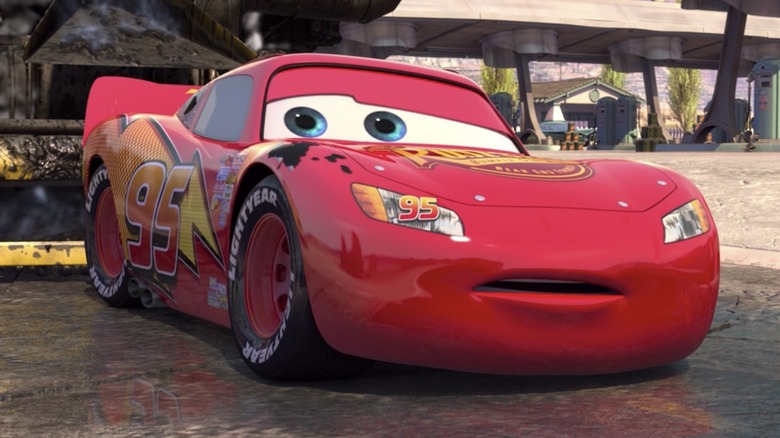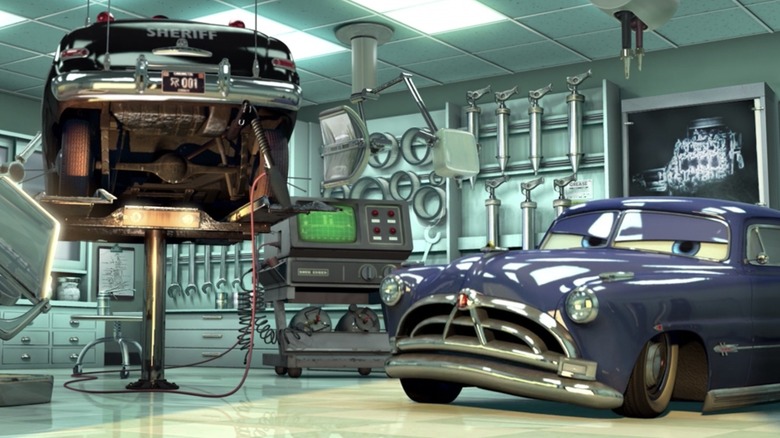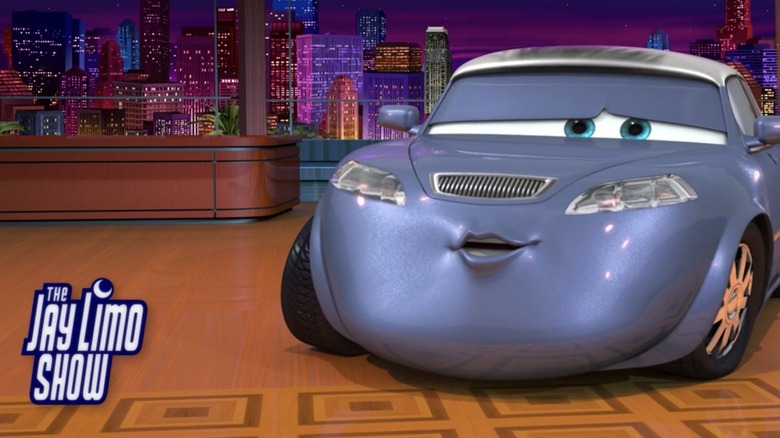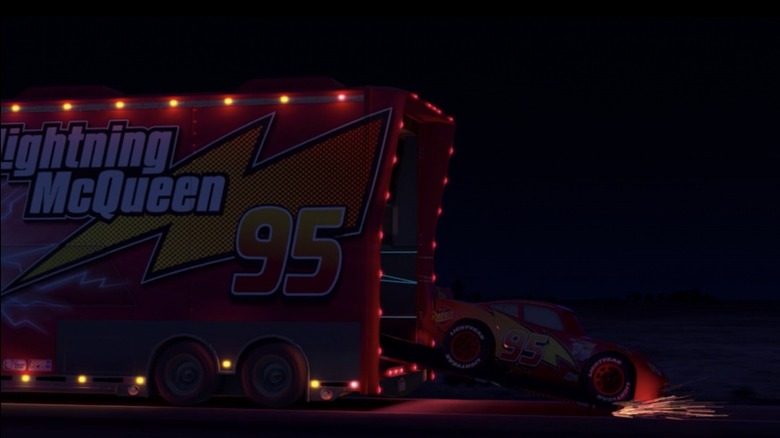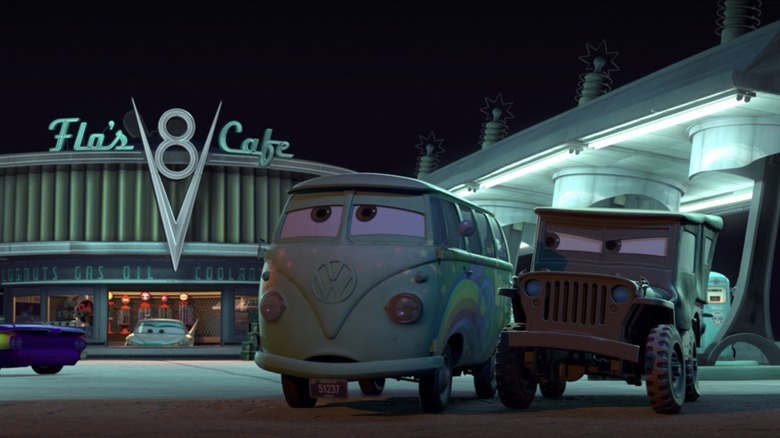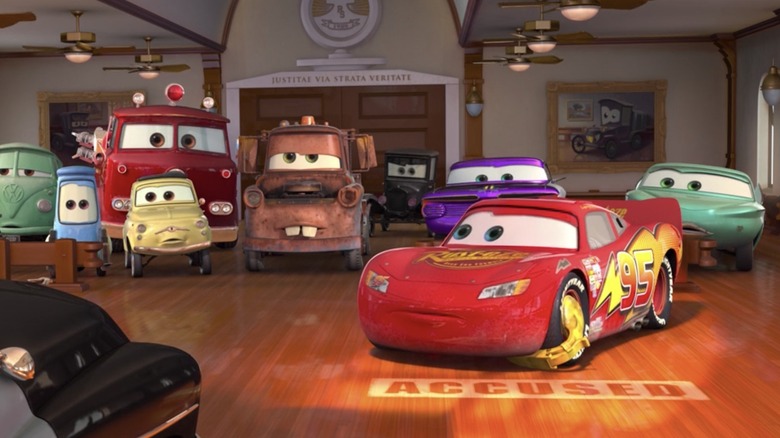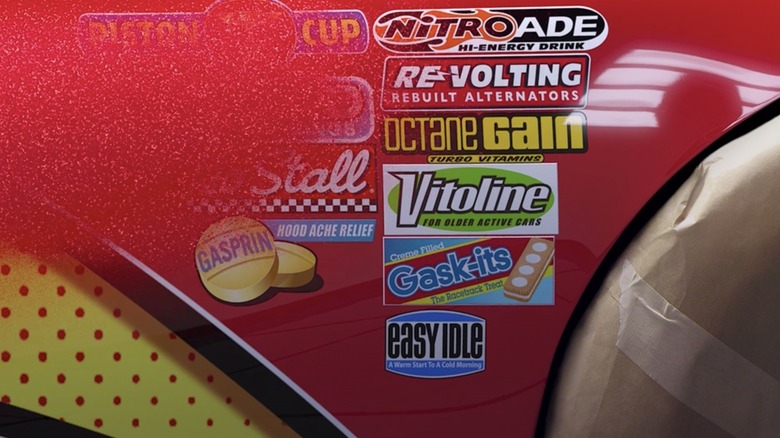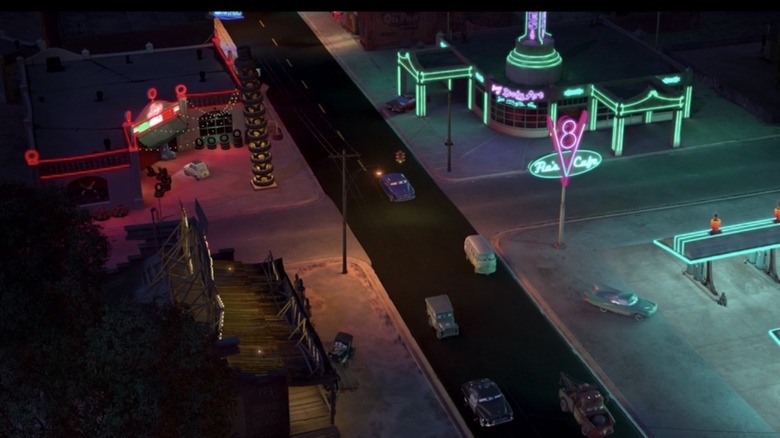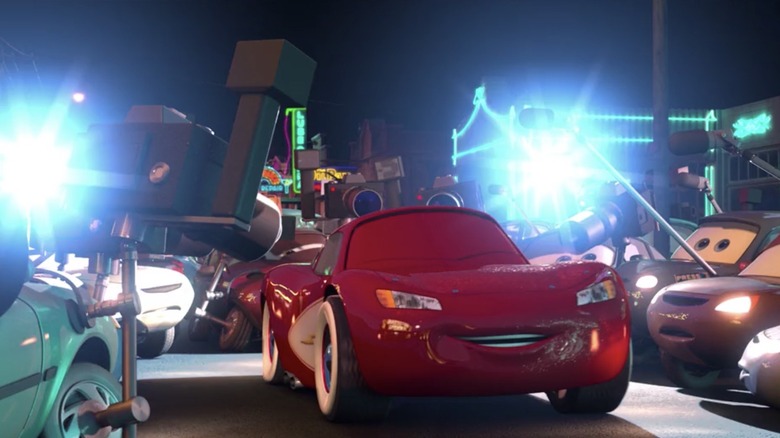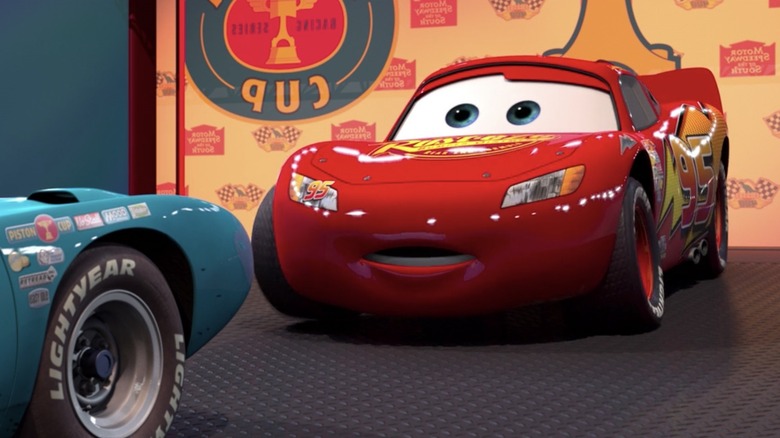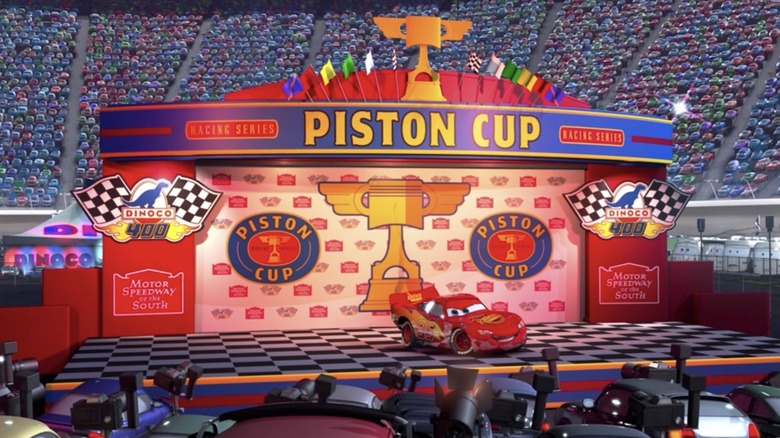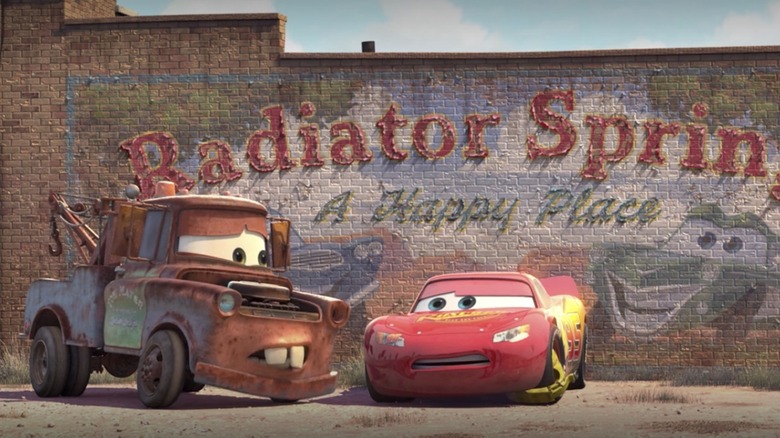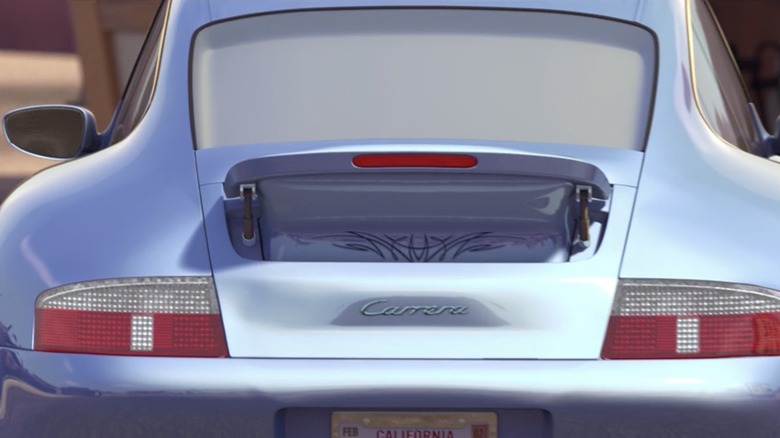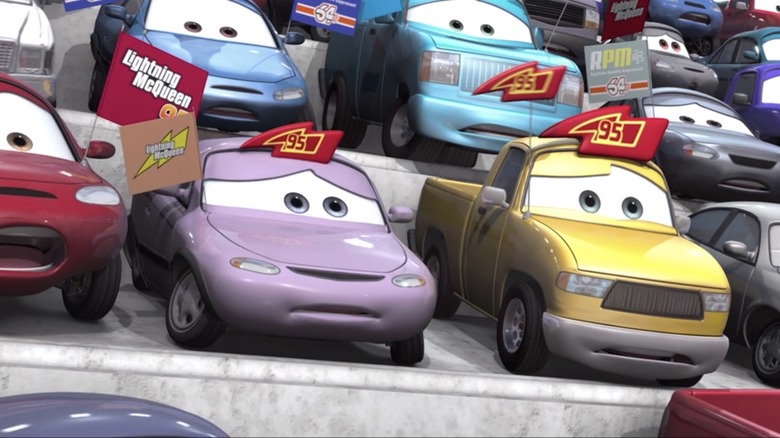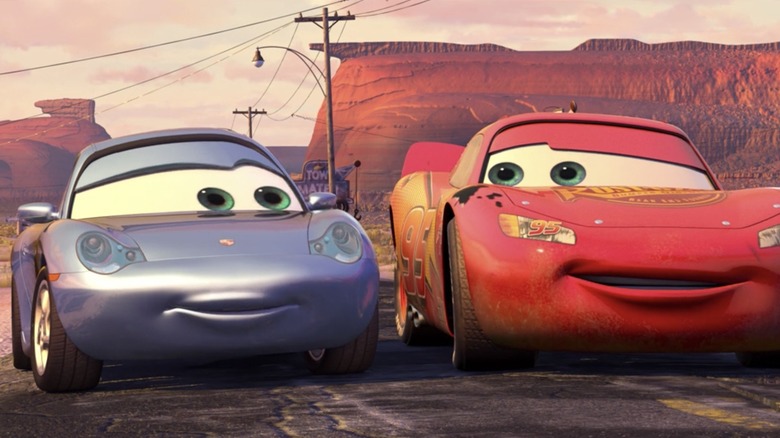What Only Adults Seem To Catch In Cars
Pixar Studios has always had a special way of telling stories, and the movie “Cars” is definitely no different. When this family film was first released in 2006, it had kids swarming to see it in theaters. However, those same young kids certainly couldn’t drive themselves there. Many parents accompanied them to see the same G-rated animated feature.
While kids may have loved the movie, many adults walked away feeling as though they had seen a completely different film than their child. Everything from the inappropriate jokes to the sometimes unexplainable storyline had us all scratching our heads. Surprisingly, the creators made it this way for a reason. After all, you have to keep your entire audience interested — especially if you want them all to come back for two sequels.
Luckily, many of these mature moments fly right over kids’ heads, but adults take notice. So, whether you were an adult who saw the original “Cars” in theaters or you were a kid at the time, we’re here to enlighten you. Here are the things that only adults seem to catch in the very first “Cars” movie.
The movie Cars actually features a lot of jokes that are inappropriate for kids
Scattered throughout the movie “Cars” are actually a lot of mature jokes. From the many references to their “undercarriages” to something as simple as the speedway environment, sometimes it feels as though this movie was actually made for adults. There are a few different reasons why.
If you look around the racetracks that appear throughout the movie, there isn’t a kid in sight — and for good reason. Aside from the obvious smack talk on the speedway, some of the fans are outright inappropriate. For instance, when Lightning McQueen ends his first race at the beginning of the movie, his two biggest female fans “flash” him.
Later on in the movie, when Lightning McQueen is imprisoned in Radiator Springs, he’s telling Mater all about the Piston Cup. The rusty old tow truck responds with, “He did what in his cup?” While kids may not understand what he meant, their parents sure did.
A countless number of celebrities lent their voices to Cars' main characters
When you begin watching “Cars,” you’re greeted by a black screen and the sound of a single voice. Many adults may immediately recognize it as Owen Wilson, while many kids may hear the character Lightning McQueen instead. Another recognizable adult voice comes from Lightning McQueen’s best friend Mater, played by Larry the Cable Guy — a comedian that youngsters most likely haven’t heard much of. These aren’t the only two famous names who lent their voices to the family film, either. Many of the actors who voiced the “Cars” characters usually only appear in films targeted toward adults.
One of the more obvious faces comes from iconic car collector Jay Leno, who has certainly had his share of delivering inappropriate jokes. During a montage of “braking news” about Lightning McQueen’s disappearance, the former talk show host appears as “Jay Limo.” He only appears for a few minutes while delivering his late-night monologue to a crowd full of cars, so kids most likely didn’t recognize him. After all, staying up to watch any late-night talk show would make young fans much too tired.
The strange scene from Cars when Lightning McQueen falls out of Mack got adults thinking
The movie “Cars” takes an unexpected turn — literally — when Lightning McQueen falls out of the back of a snoozing semi named Mack. It’s a pivotal point in the movie — and one that makes adults everywhere who are watching stop and think.
While Lightning McQueen is asleep and safely inside the semi truck, the backend suddenly opens, and McQueen slowly begins to roll out onto the interstate. For one, why wouldn’t Lightning McQueen realize he had fallen out of a moving car? Most interstates have an average speed limit of 65 miles per hour, and if you happen to roll out of a car moving that fast, you’d more than likely wake up.
Mack doesn’t seem to realize that a part of him is missing, either. When his backend initially ends up on the ground, it’s scraping across the concrete and creating sparks. As part of his “body,” that should definitely hurt. Yet, when he awakens after McQueen has already ended up on the street, he closes himself back up like nothing even happened. Shouldn’t he have wondered why his backend was open in the first place? It also got us thinking, does he not literally feel empty inside?
The movie Cars includes an awful lot of drug references
A movie with a G-rating usually doesn’t indicate the presence of drug references, but there are actually an awful lot of them in the movie “Cars.”
The first time we hear about them happens while Lightning McQueen is promoting Rust-eze Medicated Bumper Ointment. When the rusty cars around him point out that McQueen doesn’t have any headlights, he explains how racecars don’t need them “because the track is always lit.” The car next to him laughs and replies, “So is my brother, but he still needs headlights!”
Later on in the movie, the references become crystal clear when we’re introduced to a 1960 VW Bus named Fillmore. As he sits and stares at the only flashing stoplight in Radiator Springs, he tells the car next to him, “Every third blink is slower.” His psychedelic flower pattern and squinted eyes are an obvious indication that he’s on something.
There's no need for many of the things found in the world of Cars
Adults and kids alike will notice that humans don’t appear anywhere in the “Cars” franchise. While the rest of their world may seem familiar, adults will notice that there are a lot of items around that are completely unnecessary for cars.
When Lightning McQueen is first taken into custody in Radiator Springs, for example, he appears alongside many other cars in a massive courtroom. The ceilings extend extremely high so that the judge can be lifted into the air above them. While Doc Hudson is hoisted into the air, many moving ceiling fans are seen spinning — but what’s the point of having those?
One theory swirling around the Internet is that these cars live in a world where automobiles have overtaken the human race. Though Pixar has never commented on the confusion, the film’s creative director, Jay Ward, has shared his own theory. “It’s getting to the point where you can sit back in the car and it drives itself,” he explained to ScreenCrush. “Imagine in the near-future when the cars keep getting smarter and smarter and after one day they just go, ‘Why do we need human beings anymore? They’re just slowing us down. It’s just extra weight, let’s get rid of them.'” It’s a little too intense for a family film, if you ask us!
The movie Cars includes many references to famous brands
Out here in the real world, race cars are covered from head to tail light in brand names. This is exactly how it works in the “Cars” world, too. However, these iconic names have a completely new spin on them.
Adults may notice that all the cars watching the race are drinking something called Dinoco Light. It sounds an awful lot like a real alcoholic beverage — Bud Light, Coors Light, or Miller Lite — that adults can enjoy. Yet, these automobiles are guzzling gasoline from the franchise’s fictional company Dinoco. Fun fact: This oil company first appeared in Pixar’s “Toy Story” franchise.
Another example is the brand name that’s stamped on all the racecars’ tires — Lightyear. It may remind you of the popular company Goodyear. Yet, Lightyear seems to be another subtle nod to the “Toy Story” movies.
At other times in the movie, the creators reference exact names of items in the real world — like when Luigi shouts, “There is a real Michael Schumacher Ferrari in my store!” Adults will notice that all of the cars featured in the film are ones you can also see off-screen.
Though Radiator Springs from Cars isn't real, its interstate is
The town of Radiator Springs from the movie “Cars” may not be real, but adults who are watching may recognize roads around it. In fact, some audience members — those old enough to have a license, that is — could have even driven on these same roads themselves. Both Route 66 and Interstate 40 are actual interstates, and even the story behind how they came to be in “Cars” is accurate.
According to the Travel Channel, Route 66 was created in 1926 to help cars travel easily from Chicago to Los Angeles. In the movie, this historic route was what once helped bring automobiles into the small town of Radiator Springs. However, the town started to lose its luster after another new interstate was created, and the same thing happened in real life. Over time, Interstate 40 slowly started to take over, leading cars further south and away from small towns like Radiator Springs. Interesting, right?
How do the characters in Cars hold things without hands?
Our thumbs are a major reason why humans became such a successful race. However, automobiles don’t have any hands at all — so how in the world are they able to hold things? Funny enough, even the creators of the movie “Cars” had trouble figuring this out at first. “The only appendage they had was this antenna,” storyboard artist Rob Gibbs explained in a behind-the-scenes video. However, no one working on the movie saw how they could make this work. “It kind of looked a little creepy,” Gibbs said, so they had to come up with other ideas.
Adults who watch the opening scene closely will notice that the cars holding cameras have a funny contraption coming out of their wheels. It seems like the easiest explanation for how these automobiles can hold intricate items. While it’s an ingenious idea, there’s still something missing. Those cars need fingers in order to press the camera’s buttons.
The movie Cars briefly brings up religion
When Mack finally finds Lightning McQueen in Radiator Springs in the movie “Cars,” he’s talking a mile a minute. Yet, anyone listening closely will hear him say, “Thank the manufacturer, you’re alive!” It may seem like a simple line to a kid watching, but any adult witnessing this will notice that it’s a quick reference to religion. While they may only be cars, they still believe in something.
We all know that cars are made by a manufacturer, but considering no humans exist in the world of “Cars,” the one responsible for making all of these automobiles must be a higher power. After all, where else would these talking cars come from?
When Slash Film asked the creators of “Cars” about this quick reference, they had a quick response, too. “We try not to go there. We just try not to go there,” story supervisor Scott Morse said. “There’s a surreal level of disbelief that you’re having to jump already coming into the world where there are talking cars. … We lean into that as much as we can and try not to get too hung up on the surreal nuts and bolts of it, I guess.”
"Float like a Cadillac, sting like a Beemer" is more than just a famous catchphrase from Cars
Lightning McQueen is one of the world’s greatest racecars in “Cars,” and he even has his own iconic catchphrase. “Float like a Cadillac. Sting like a Beemer,” he repeats over and over again. It may seem silly to any kid watching, but adults will realize that they’ve heard something similar to this before.
The quote comes from another pretty incredible competitor who existed in the real world — boxer Muhammad Ali. His catchphrase may not have as many car companies referenced in it, but it’s still just as iconic to everyone around the world. “Float like a butterfly. Sting like a bee,” was what Ali was known for saying while in the ring.
While this boxer was alive, he was a true legend, and the creators of “Cars” knew what they were doing by making McQueen say it, too. This legendary automobile is one that kids – and adults – everywhere recognize now.
The residents of Radiator Springs shouldn't have survived in Cars
Before Lightning McQueen came along, the small town of Radiator Springs in the movie “Cars” hadn’t seen a customer in a very long time. The quaint town consists of many businesses, like a tire shop, a gas station, and the Cozy Cone Motel. Yet, working adults who are watching may ask themselves: How are these businesses and cars surviving without a single customer in sight?
As we learn throughout the first film, gasoline is what these cars need in order to survive. Since the automotive occupants of Radiator Springs require this fuel for food, how are they affording to have more and more shipped into their tiny town?
A simple explanation could be that the 1960 VW Bus named Fillmore is making everyone some of his organic fuel, but he would still need specific ingredients shipped there in order to do so. We all know that gasoline is not cheap, and since these cars aren’t making any money, they really shouldn’t have survived out in Radiator Springs for so long. In the words of Fillmore, “They’re feedin’ us a bunch of lies, man.”
Sally has a lower back tattoo that she's ashamed of in the movie Cars
Though Sally in “Cars” is proud of her small town of Radiator Springs, she’s not so proud of her small back tattoo. The “little pinstriping tattoo back there” is something that Lightning McQueen points out as she’s driving away, and she immediately becomes embarrassed. Though it may not seem like much to a kid watching, this could bring up regretful feelings in any adult who’s sitting alongside them.
In a behind-the-scenes clip included with the “Cars” DVD, the creators explain how Sally acquired the tattoo while living in California. Now, she’s older and wiser and not very excited about it anymore, so why did she never get it removed?
Later on in the movie, Lightning McQueen is getting a total makeover in Radiator Springs. He receives new tires, organic fuel, and a completely new paint job. Seeing as Sally is such good friends with the residents of Radiator Springs, it doesn’t make much sense that she couldn’t have just painted over her “pinstriping tattoo,” too.
There are no baby automobiles in the movie Cars
Cars may come in all shapes and sizes, but not ages. While “Cars” may be a movie geared toward kids, adults may notice that there isn’t a single car in the movie who is a child. In addition to that, no one ever references having any parents or even family members, so it seems as though no car ever had a childhood — something that young fans of the series will never be able to relate to.
If there are no kid cars, there is no way that these automobiles “give birth” like humans do. So when Slash Film asked the creators where these cars come from, the creators revealed that they had hoped to avoid this question altogether when making the movie. “I remember how much thought went into them getting gas, like the contraption of the arm at the gas station,” writer Kiel Murray said. “And there was way too much time spent on that, let alone babies or God.” Even the creators themselves still have unanswered questions about the “Cars” universe!
This is the ultimate message of the movie Cars
In the end, there’s a deeper meaning to “Cars” that kids don’t necessarily see. The entire movie is full of characters who reminisce back on the good old days. The ultimate message that adults who are watching walk away with — or, you know, drive away with — is that it’s important to slow down and focus on what’s important in life.
In addition, Lightning McQueen learns that life’s not all about his image. Though he gets approached to be the face of Dinoco at the end of the film — something he could only ever dream about — he continues to stand beside the rusty cars who helped jumpstart his career. McQueen used to be embarrassed by them all, including his new friend Mater, but he comes to realize that what’s on the inside is really what counts. And, speaking of, what is on the inside of these cars…?
Source: Read Full Article
